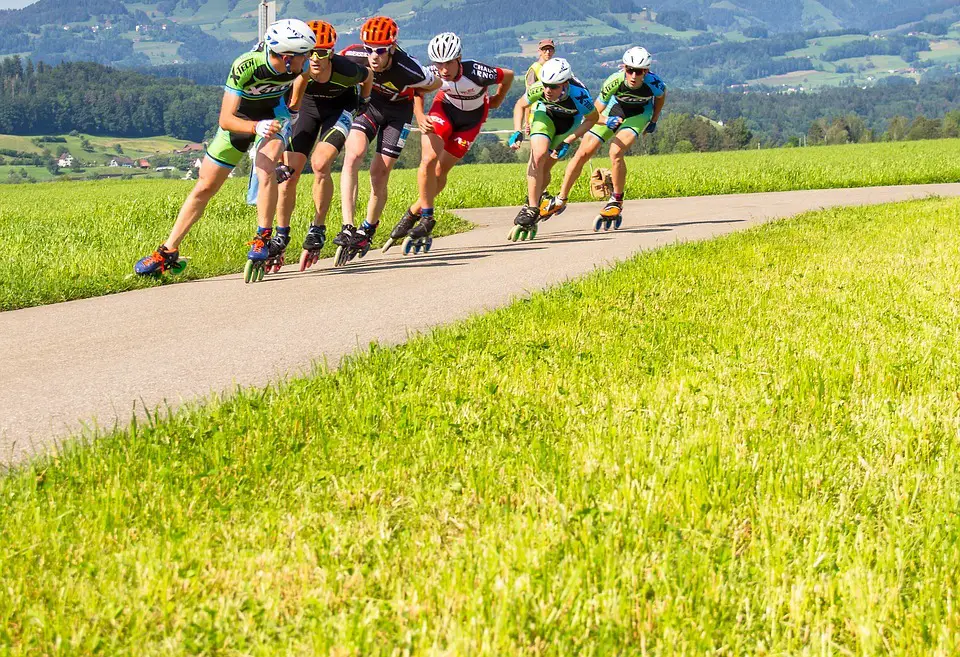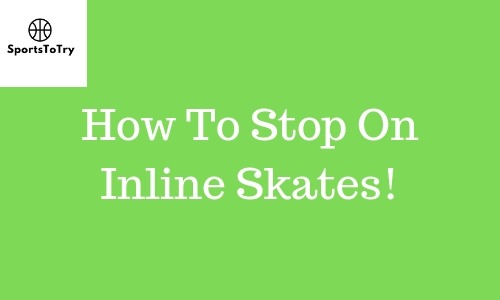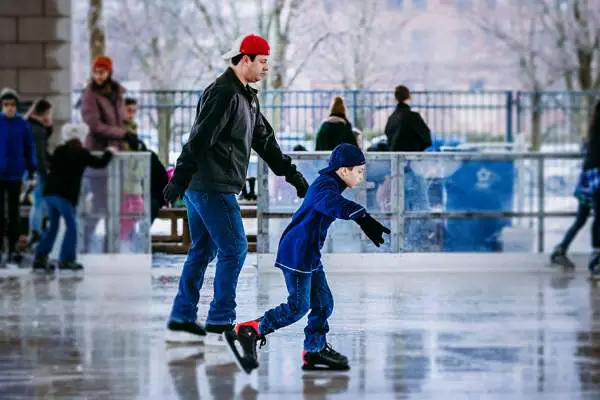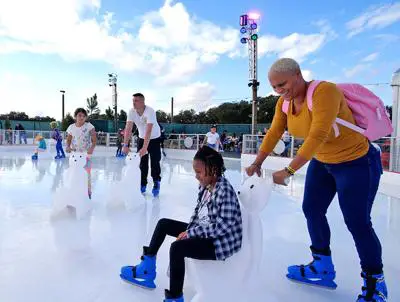How to Stop on Inline Skates [Best Methods Explained With Videos]
( If you purchase through our sponsored links, we may receive a small commission at no extra cost to you )
There are a few different ways to stop inline skates, but the most common and effective method is to use the heel brake. To do this, shift your weight to the skate with the brake and press down on the brake with your heel. Be careful not to press down too hard, or you may lose your balance.
Another popular stopping technique is the T-stop. To do a T-stop, start by skating with your feet shoulder-width apart. Then, quickly bring one foot behind the other, forming a T-shape with your skates. As you shift your weight to the back foot, lift your front toe and drag it across the ground.
If you are a beginner, you may want to start with the plow stop. To do a plow stop, start by skating with your feet shoulder-width apart. Then, angle your toes inward and shift your weight to your heels. This will cause your skates to slide to a stop.
No matter which stopping technique you choose, it is important to practice regularly so that you can stop safely and effectively in any situation.
That said, inline skating will test you. One of the major dares with rollerblades is countering and stopping against such high-speed rates. While you may think
Yes, it’s that important!
Now, remember that the braking system in rollerblades is not the same as the roller skates at all. On the other hand, the braking system in rollerblades varies in terms of shape, design, and position. So, it’s a whole new ballgame with rollerblades.
Stopping on inline skates requires special moves developed in the US and some other countries of the world. In addition, these moves are improved on, perfected, and innovated,–this is a continuous process.

How to Stop on Inline Skates
Although people are now using many moves that really are variations or combinations of a few basic techniques–namely the T-stop, the Plow Stop, and the Heel Break, besides these techniques, there are other convenient methods available to stop on inline skates. In this article, we will discuss methods and techniques regarding how to stop on inline skates.
Let’s get started.
Method #1–Using the Brakes
You can find a brake at the end of one boot in most inline skates. First, you need to get low. This position lowers your center of gravity. Then, to engage the brake, you need to bend your knees–not super-bent knees. Then put forward the ‘brake’ skate with your legs kept in a ‘staggered’ position.
Make sure you pull back the rear leg. And your feet shouldn’t be expanded more than shoulder-width apart.
KEEP IN MIND
· Don’t look down. And keep your back upright, so don’t lean forward. Leaning forward weakens your brake power.
· Put your hands forward and keep your eyes upon the road.
· Now turn up the top of the brake skate, followed by a solid pressure on the brake.
· Don’t forget to extend your knee.
· Lower your butt and lose your weight, then sit a little.
This stop involving using the brake is a lot like standing on your car’s brakes. This method should stop on inline skates fairly quickly.
Method #2–Stops without Brakes!
The following moves are the basic techniques applied to stop on inline skates. These techniques differ from each other. However, all other techniques are variations of these three basic techniques.
These methods give you the answer to a burning question, “How to stop on inline skates without a brake.” To clarify, we explain here how your knees, toes, foot, and whole-body help you stop on inline skates in a systematic way. Let’s begin.
The Plow Stop
If you have previously skied or skated on icy ground, you might have noticed that when you move away from the power box, you’ll find yourself ahead of your earlier position. The next move you make is that you change the position of your toes. It supposes the position of your toes to form a reversed V shape in front of you. When you eventually get into this position, you crouch down and sit back.
What does this result in?
This position pulls and converges your weight near the stop. The force pervades and gets dissipated through the stop fast. By assuming this position for seating, you guide the skates in an onward position.
Let’s R
· Assume a position for seating
· Keep your toes pulled together
· Pull your skates frontward
The T-Stop
Assume your position in a T-shape. Then, thrust your foot onward and your foot will then reposition at that verge. This will cause a firm and straight leg position. Just remember to keep your foot straight. Keep your ankle in a steady position and don’t let it slide down; Otherwise, this will break the T-stop position.
By maintaining your leg in that position and assuming a T position, your shoulder and hips will be pushed forward. Therefore, the onward motion will move the rest of the body and rest your foot underneath. The foot will slide. The motion will keep forcing your body forward and continue to do so until you achieve the T stop position.
Let’s R
· Push your one foot behind you.
· Keep your toes turned out.
· The wheel of your skate should be at right angles to your travel direction.
· Use your foot to apply downward pressure until you’ve stopped.
· Your shoulders should face your direction of travel.
The Heel Break
You achieve this position when you bow your arms and knees simultaneously. You do the heel
Some skates may not have such an element. In that case, this kind of action dispels your energy and makes you slow down.
Remember, apply the heel brake technique only when you have sufficient room in front of you. Moreover, the heel brake technique won’t work unless you have enough space in front of you. If you end up doing it in a constricted area, you’ll end up slamming into something.
Let’s watch a video:
What to Remember When Trying to Stop on Inline Skates
· When you’re riding a bicycle downhill, if you get scared, you slam on the brakes. But, with rollerblades, it’s a whole new ballgame. You cannot slow down and there’s no going back. Instead, try to use the hill to your advantage. You may use the brake to slow down at the top.
· When you get scared, remember this mantra: Low, heels. Always try to do everything to stay safe. Don’t cloud your imagination with “this might or might not happen” imagination.
Before the end, want to share a video that will make you more clear about stopping on skates.
Bottom Line
Knowing how to stop on inline skates is critical to skating safely. Most importantly, be confident about what you’re doing. You can’t afford to gamble with your best quality rollerblade. Right!?
However, in this article, we have discussed the ways you can successfully stop on inline skates without shortchanging thrill. Following several techniques is a good practice and wouldn’t take away the excitement. So, have fun! Besides stopping, you need to be interested In getting better at inline skating. So, Let’s read ” How to get better at Inline Skating“



![Do People Still Rollerblade? [Past and Present of Inline Skating]](https://sportstotry.com/wp-content/uploads/2021/07/do-people-still-rollerblade.jpg)
![What To Wear Roller Skating [Best Outfit & Protective Gear]](https://sportstotry.com/wp-content/uploads/2020/11/what-to-wear-roller-skating.jpg)
![What to Wear for Ice Skating [10 Best Recommendations]](https://sportstotry.com/wp-content/uploads/2021/06/what-to-wear-for-ice-skating.jpg)

Please take a look to Simbrakes.
Hey Peter, Yea SImbrake is one of the great methods to stop on inline skates. Thanks. I have found two important videos on this. Check those out:
https://youtu.be/W7M98phIIdc
https://www.youtube.com/watch?v=QUvnSRNoR2A